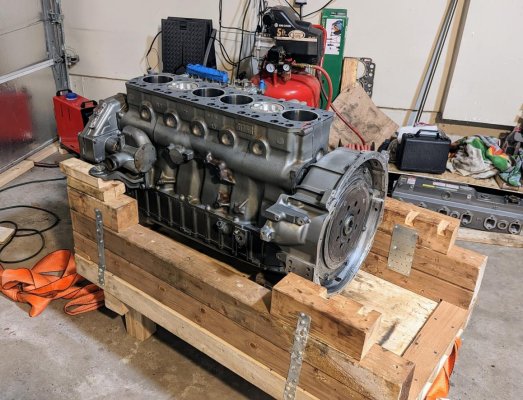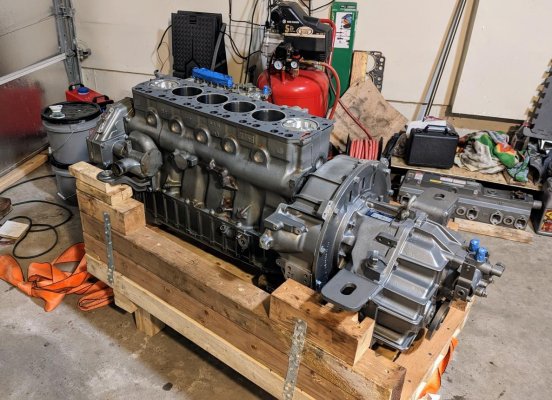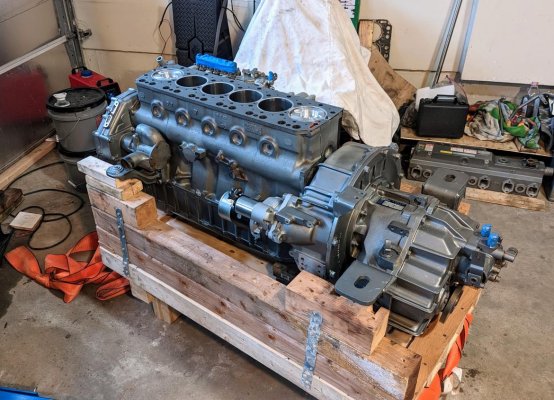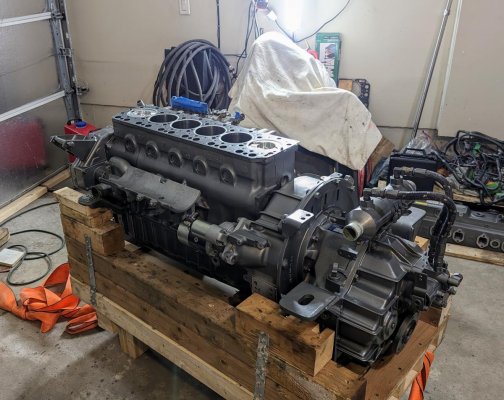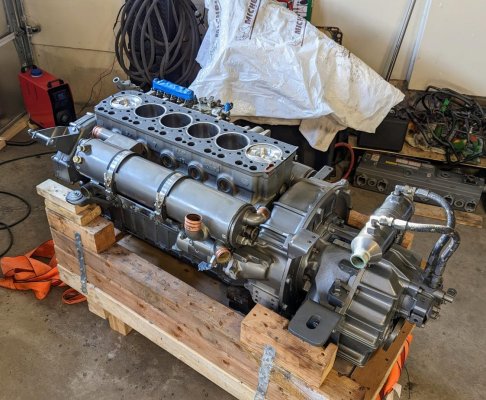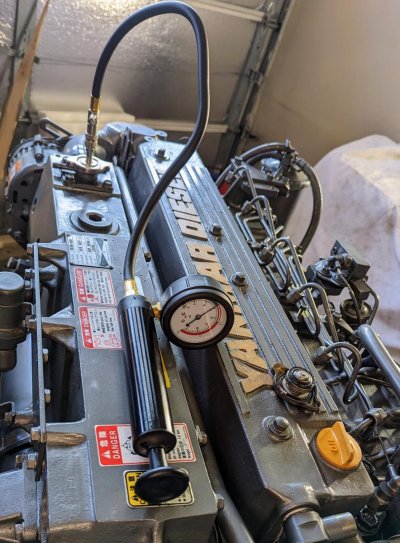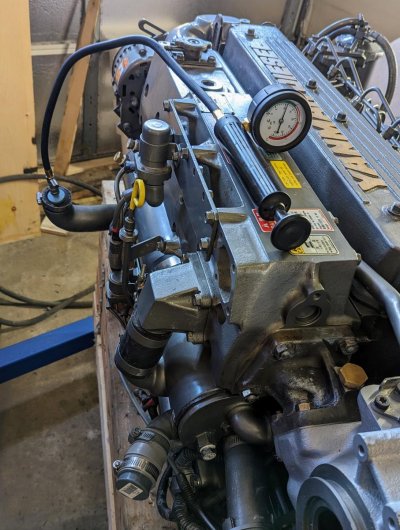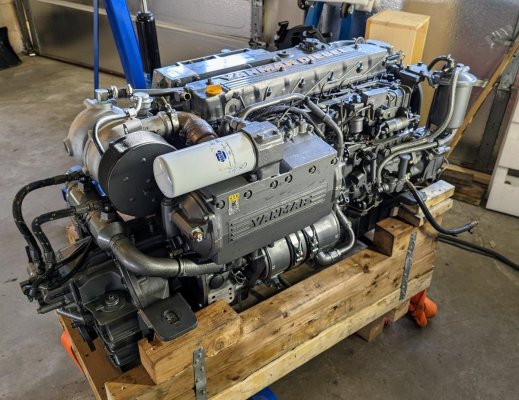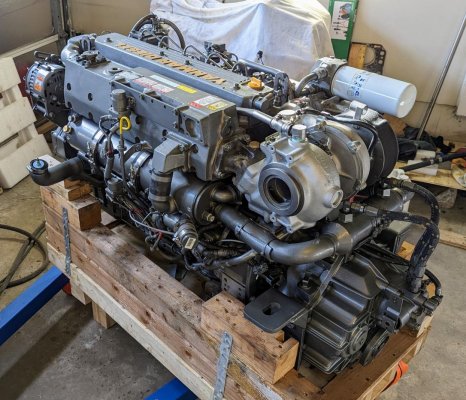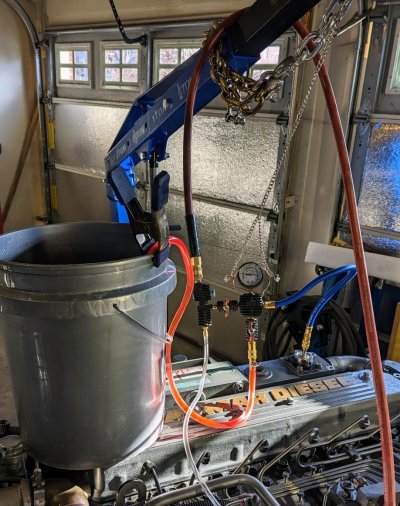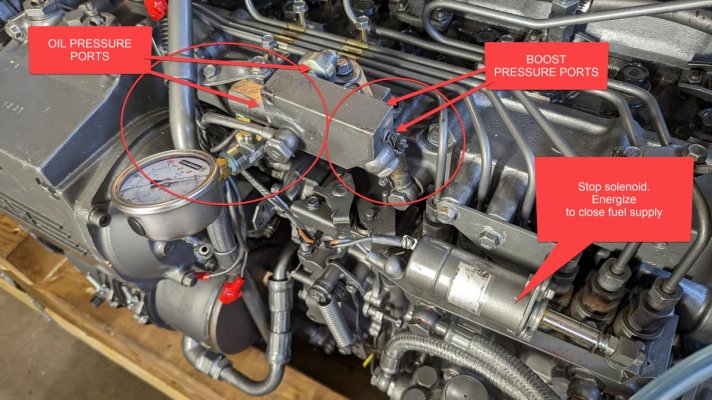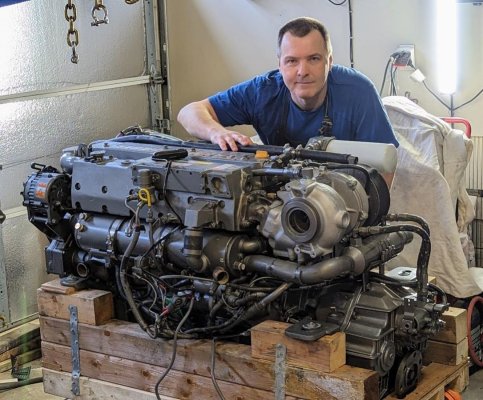Waterant
Senior Member
Update 03/31/2023
The head is off AGAIN! ?
After testing all 6 cylinders for leaks, I was blessed with the knowledge that I suck at valve lapping. 2 cylinders had a 5% leak, which is acceptable, 2 had a 15%, and 2 had a 35% leak.
Doing the manual valve lapping again did not change the numbers a bit, so I took the head off and brought it to a machine shop for a proper valve job. They promised to finish in a week but will call me before they start. This was two weeks ago, no call. When I called, they said they would "take a look today or tomorrow". ?
Man, I hate working with the local machine shops. Extremely frustrating.
I wish AI could do this kind of work. Well, someday... ?
The gearbox is installed.
2 of 3 large heat exchangers are installed.
So, waiting for the head now to install the rest.
Lessons learned:
1) If you find a machine shop that does what it promises, buy them a case of beer and keep them happy?
2) Test everything! If I kept this head with leaking valves on, the engine would probably work, but performance would be lower than optimal. And with the high diesel price, I want the best performance I can get out of my engines.
3) From what I found, a proper valve job must be done in the machine shop to connect valves and seats at the proper angle. So, save time and bring the head to a shop from the beginning. If I did that, it would be done b the time i need it for the assembly.
4) Manual valve lapping can be done after this to get the last few % of valve leakage away. To do this, you will need a fine-grit valve lapping compound (600+). Most auto stores sell only very coarse compounds.
5) If you want to do a leak test, get a more expensive OTC Cylinder Leakage Tester Kit instead of a cheap Harbor Freight-type tester. I got a cheap tester first, and the readings were all over the place. I returned it and got an OTC unit spot on every time I retested.
I am attaching the few days' progress photos for your enjoyment.
The head is off AGAIN! ?
After testing all 6 cylinders for leaks, I was blessed with the knowledge that I suck at valve lapping. 2 cylinders had a 5% leak, which is acceptable, 2 had a 15%, and 2 had a 35% leak.
Doing the manual valve lapping again did not change the numbers a bit, so I took the head off and brought it to a machine shop for a proper valve job. They promised to finish in a week but will call me before they start. This was two weeks ago, no call. When I called, they said they would "take a look today or tomorrow". ?
Man, I hate working with the local machine shops. Extremely frustrating.
I wish AI could do this kind of work. Well, someday... ?
The gearbox is installed.
2 of 3 large heat exchangers are installed.
So, waiting for the head now to install the rest.
Lessons learned:
1) If you find a machine shop that does what it promises, buy them a case of beer and keep them happy?
2) Test everything! If I kept this head with leaking valves on, the engine would probably work, but performance would be lower than optimal. And with the high diesel price, I want the best performance I can get out of my engines.
3) From what I found, a proper valve job must be done in the machine shop to connect valves and seats at the proper angle. So, save time and bring the head to a shop from the beginning. If I did that, it would be done b the time i need it for the assembly.
4) Manual valve lapping can be done after this to get the last few % of valve leakage away. To do this, you will need a fine-grit valve lapping compound (600+). Most auto stores sell only very coarse compounds.
5) If you want to do a leak test, get a more expensive OTC Cylinder Leakage Tester Kit instead of a cheap Harbor Freight-type tester. I got a cheap tester first, and the readings were all over the place. I returned it and got an OTC unit spot on every time I retested.
I am attaching the few days' progress photos for your enjoyment.

